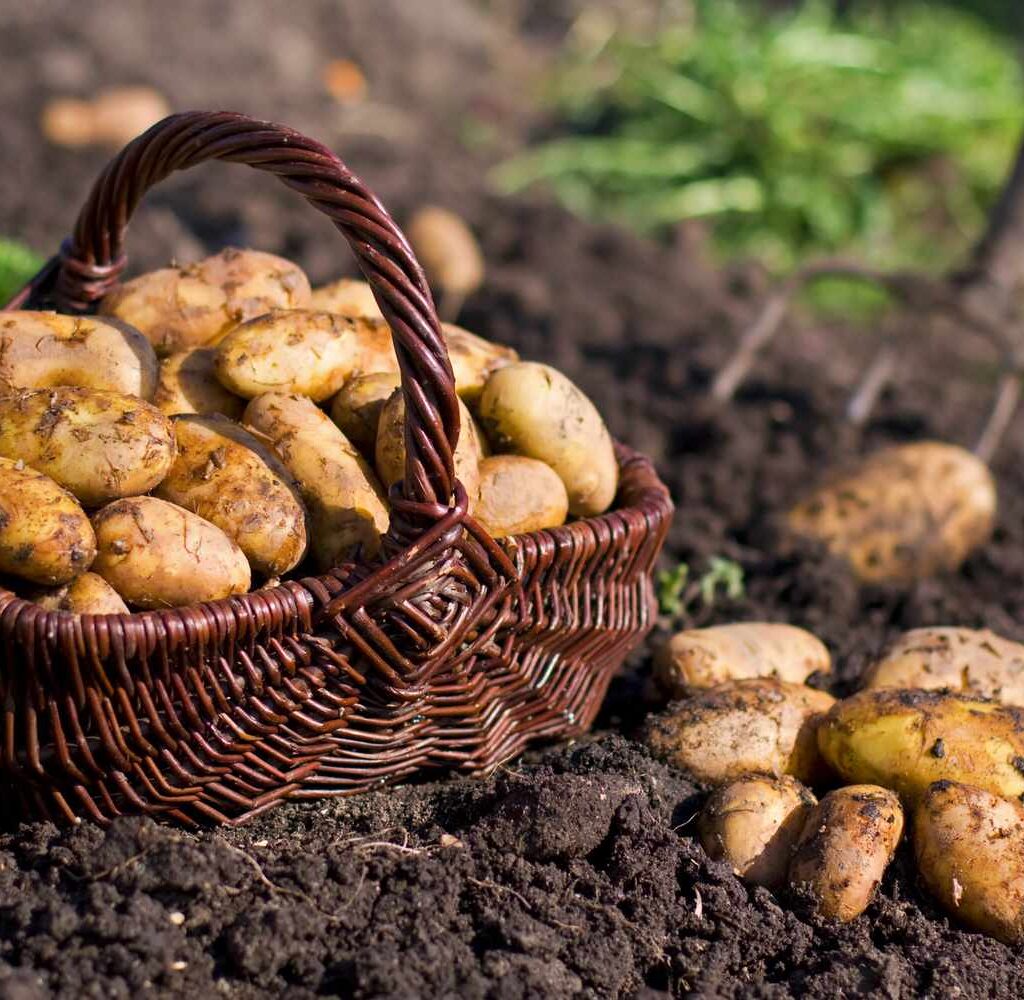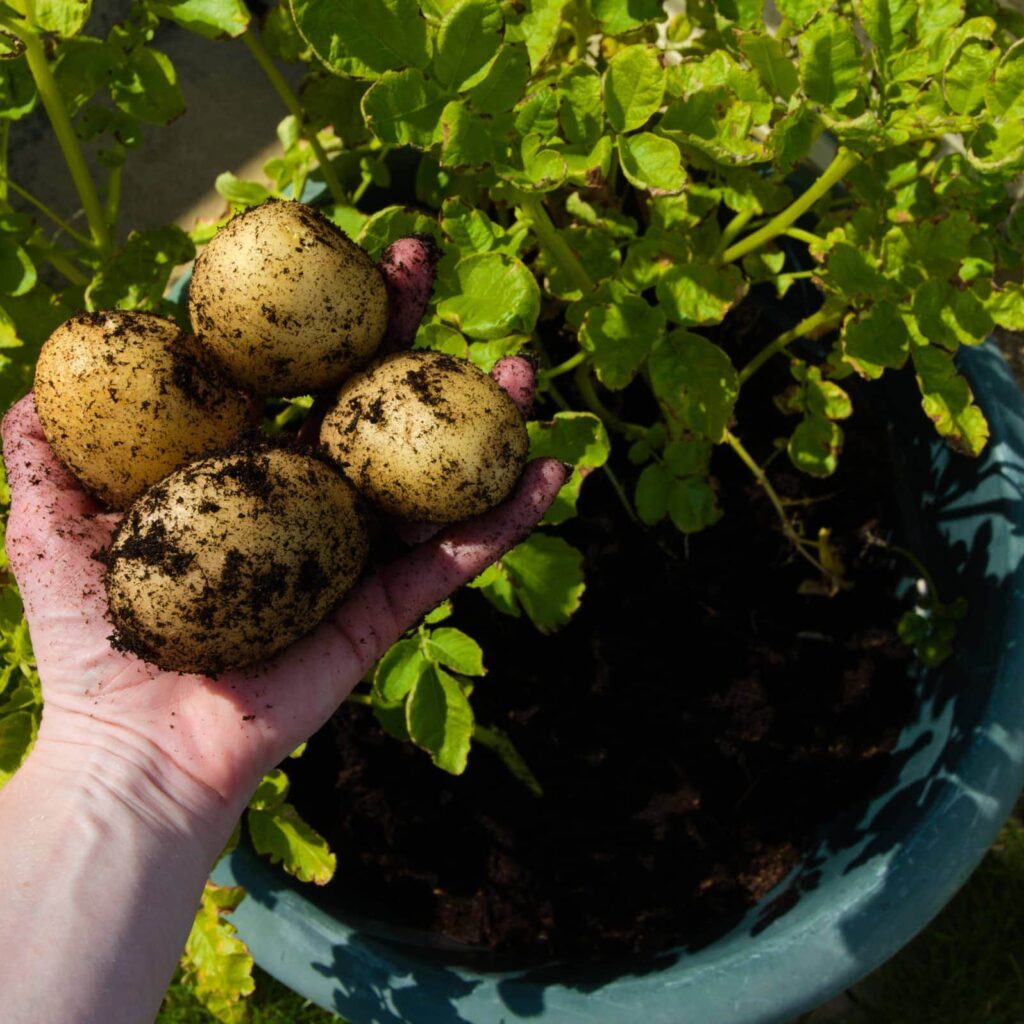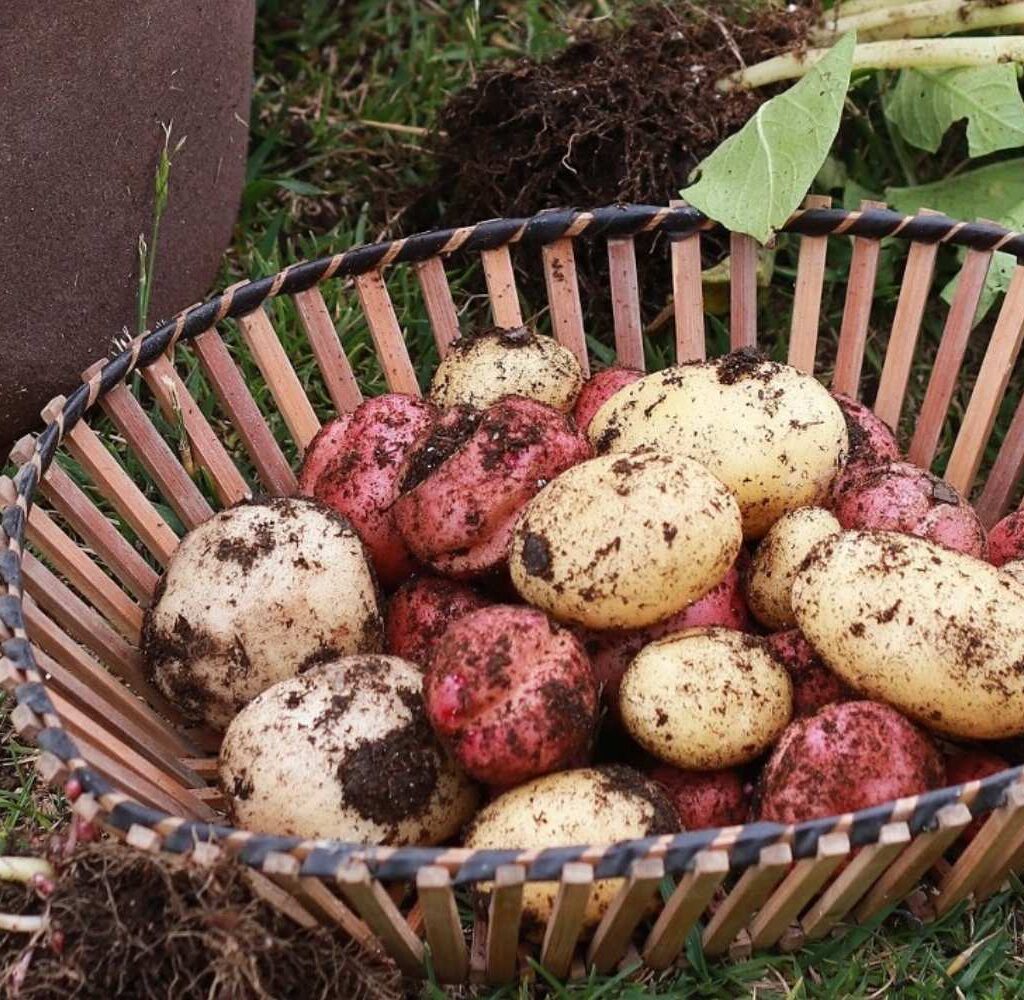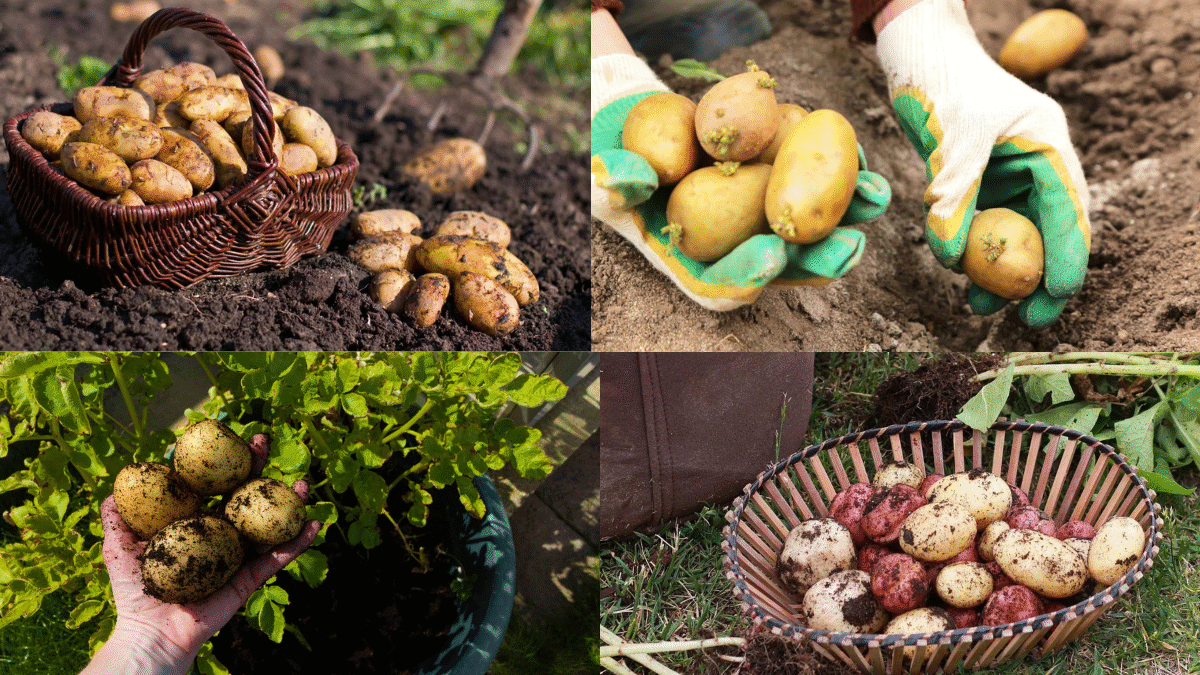Potatoes are one of the most rewarding and versatile crops you can grow in your home garden. Not only are they delicious and packed with nutrients, but they’re also relatively easy to cultivate, whether you have a sprawling backyard or a small space with containers. If you’ve been dreaming of digging up plump, golden tubers from your garden, this guide will walk you through everything you need to know about planting and caring for potatoes for a bountiful harvest.

Why Grow Potatoes at Home?
Before we get into the how-to, let’s talk about why growing your own potatoes is worth it:
- Freshness and Flavor: Homegrown potatoes taste richer and fresher than store-bought ones.
- Variety: You can choose from dozens of potato varieties — from buttery Yukon Golds to vibrant Purple Majesty.
- Sustainability: Growing your own food reduces your carbon footprint and cuts down on grocery bills.
- Ease of Growing: Potatoes are hardy, low-maintenance, and suitable for both garden beds and containers.
Choosing the Right Potato Varieties
Different potato varieties thrive in different climates and soil conditions, and they vary in taste, texture, and culinary use. Potatoes are generally grouped into three types based on when they’re harvested:
- Early Varieties: Ready in about 70-90 days. Great for new potatoes (small, tender tubers). Popular choices include ‘Red Norland’ and ‘Yukon Gold’.
- Mid-Season Varieties: Harvested in about 90-110 days. Examples: ‘Kennebec’, ‘Gold Rush’.
- Late Varieties: Take 110-135 days to mature and are ideal for long-term storage. Varieties include ‘Russet Burbank’ and ‘German Butterball’.
When selecting seed potatoes (certified disease-free tubers), opt for varieties suited to your climate and culinary preferences.

When to Plant Potatoes
Timing is crucial for a healthy potato harvest. Generally:
- In warmer regions: Plant as early as late winter or early spring.
- In cooler regions: Wait until 2-4 weeks before the last expected frost date.
Potatoes prefer cool weather for sprouting but should be established before the intense heat of summer.
Preparing the Planting Site
Potatoes thrive in loose, well-drained, and slightly acidic soil with a pH between 5.0 and 6.5. Follow these steps to prep your garden:
- Choose a Sunny Spot: Potatoes need 6-8 hours of direct sunlight daily.
- Loosen the Soil: Use a garden fork or tiller to loosen soil to a depth of at least 10-12 inches.
- Enrich the Soil: Mix in organic compost or well-rotted manure to improve fertility and drainage.
- Avoid Fresh Manure: It can cause scab on potatoes.
For containers, use a deep, well-draining pot or grow bag filled with a mix of compost, potting soil, and sand.
Preparing Seed Potatoes
A week or two before planting:
- Place seed potatoes in a warm, well-lit room to encourage sprouting (chitting).
- Once sprouts are about ½ to 1 inch long, cut large potatoes into chunks, each with at least one or two eyes (buds).
- Let cut pieces air-dry for 1-2 days to form a protective skin over the cut surface, reducing rot risk.

How to Plant Potatoes
There are several ways to plant potatoes — in trenches, containers, or raised beds. Here’s the traditional trench method:
- Dig Trenches: 6-8 inches deep and 24-30 inches apart.
- Plant Seed Potatoes: Place pieces cut-side down, sprout-side up, about 12 inches apart.
- Cover with Soil: Lightly cover with 3-4 inches of soil.
- Label Varieties: If planting multiple types, mark each row.
As the plants grow, you’ll add more soil in a process called hilling.
Caring for Your Potato Plants
Watering
- Keep soil consistently moist but not waterlogged.
- Potatoes need about 1-2 inches of water per week, more during hot weather.
- Avoid overhead watering to reduce foliage diseases.
Fertilizing
- Feed with a balanced fertilizer (10-10-10) once shoots emerge.
- Avoid nitrogen-heavy fertilizers as they promote foliage over tubers.
Hilling
As plants grow to about 6-8 inches tall:
- Gently mound soil or straw around the base of the plants, covering half the stems.
- Repeat every 2-3 weeks until hills are 8-12 inches high.
- Hilling prevents sunlight from reaching the tubers, which can turn them green and toxic.
Weeding
- Keep the area around plants free of weeds to prevent competition for nutrients and water.
- Be gentle when weeding to avoid disturbing shallow tubers.
Common Potato Pests and Diseases
Stay vigilant against these potential threats:
- Colorado Potato Beetle: Hand-pick or use organic sprays like neem oil.
- Aphids: Attract beneficial insects like ladybugs or use insecticidal soap.
- Blight (Early & Late): Rotate crops yearly, water early in the day, and remove affected plants.
- Scab: Avoid alkaline soils and fresh manure; plant scab-resistant varieties.
Practicing crop rotation and avoiding planting potatoes in the same spot more than once every three years reduces disease risks.
When and How to Harvest Potatoes
For New Potatoes:
- Harvest about 2-3 weeks after plants flower.
- Gently dig around the base with your hands or a garden fork.
For Mature Potatoes:
- Wait until the plants’ foliage turns yellow and dies back.
- Let tubers sit underground for 1-2 weeks to allow the skins to toughen for better storage.
- Carefully lift the tubers from the soil on a dry day.
Storing Your Potato Harvest
- Cure freshly dug potatoes in a cool, dark, and well-ventilated area (around 50°F) for about 1-2 weeks.
- Store cured potatoes in a dark, cool, and humid space (35-40°F) like a cellar.
- Avoid storing with onions as they release gases that can cause spoilage.

Tips for a Bigger Potato Harvest
- Choose disease-resistant varieties.
- Plant early-maturing varieties for a staggered harvest.
- Use straw or mulch to retain moisture and suppress weeds.
- Ensure consistent watering during tuber formation (around flowering time).
- Practice crop rotation to prevent soil-borne diseases.
Final Thoughts
Growing your own potatoes isn’t just satisfying — it’s surprisingly easy once you know the basics. By choosing the right variety, planting in well-prepared soil, and giving your plants consistent care, you’ll be rewarded with baskets of fresh, flavorful potatoes to enjoy throughout the season.
Whether you fry them, mash them, roast them, or turn them into creamy soups, homegrown potatoes will elevate your meals and give you a delicious taste of garden-to-table living.





Leave A Comment